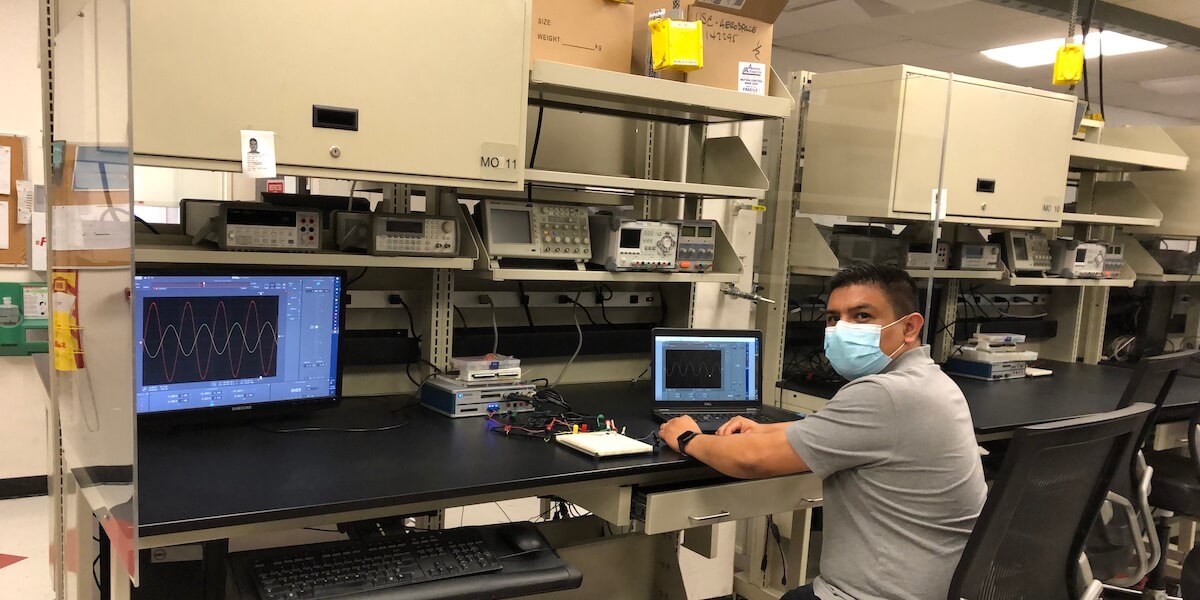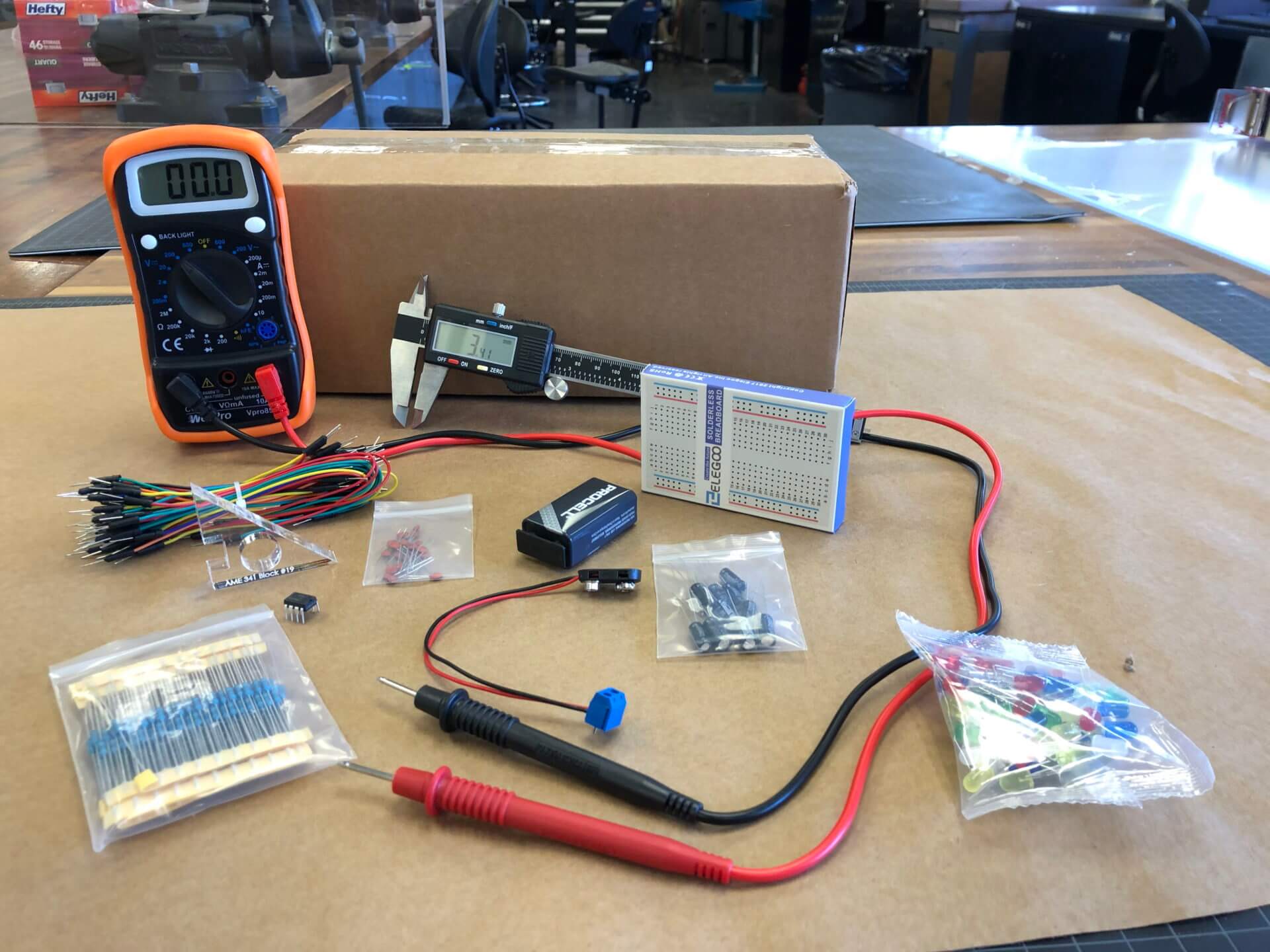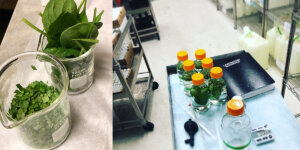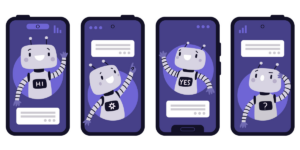
Senior Lab Technician Jeffrey Vargas models the new remote lab terminal set up, which allows TAs and students to connect to the same software remotely. PHOTO/ Charles Radovich.
As the nation prepares for students to start off the 2020-2021 school year, there are more questions than answers. A key one for Charles Radovich, associate professor of aerospace and mechanical engineering at the USC Viterbi School of Engineering, was how to create interactive learning environments usually emphasized in lab coursework in online environments.
“Once it became clear that it would be difficult for students to fully come back to campus for fall classes, we began the work of figuring out how to provide the best possible student lab experience safely,” he said.
This work began back in May. Radovich, lab technicians and teaching assistants who work with students in the Department of Aerospace and Mechanical Engineering had to convert a junior-level class—AME 341—to exist completely remotely, while ensuring extreme safety and prudence measures were applied.
Stressing the importance of providing an engaging laboratory experience for students, a pivotal breakthrough in the planning process came when Senior Lab Technician Jeffrey Vargas suggested that the lab stations get set up for remote desktop connections.
This process began with reconfiguring the lab space in Biegler Hall.
AME Lecturer Akshay Potnuru taught a summer session of AME 341 which served as a pilot test for this new online format. With 15 students enrolled, Potnuru was able to work out the logistics associated with Zoom and remote desktop connectivity. This experience was invaluable as it helped Radovich and Potnuru prepare to co-teach AME 341 this fall semester, which has over 170 students enrolled in the course.
Said Viterbi junior Luke Sauer, who participated in the summer pilot of AME 341’s remote lab: “In anticipation of this class, I’d been preparing for a pretty in-depth and intensive lab procedure. To go online and see how it would work was impressive and cool.”
Students access the lab stations through their remote desktop connection and gain full control, allowing them to control instrumentation, drive experiments and acquire data. Said Radovich: “The TA and student will log onto the same lab station. The TA can see the work the student is doing on the software and provide feedback as she goes. In that way, it’s similar to working with a student side by side.”
The students log into the lab stations through a remote desktop connection which gives them full control of their lab station and associated hardware, allowing them to control instrumentation, drive experiments, and acquire data.
AME 341, like all lab classes, is meant to be hands-on. For juniors, that means not just manipulating circuitry software, but building out circuitry hardware on their own. Given the limitations of in-person contact, this year teaching assistants will be tasked with building out the circuits instead. But students won’t miss out on the learning opportunity: each will be sent a kit to simulate the experience.

The instructors will send out hardware kits to each enrolled student, providing everything needed to simulate the circuit set up. PHOTO/Charles Radovich.
The instructors will send out hardware kits to each enrolled student, providing everything needed to simulate the circuit set up. Some experiments were redesigned so students can build fully functional setups from their homes. In addition, students received a basic engineers tool kit which includes a pair of calipers and a handheld digital multimeter.
“Before many of the labs, we’d build a specific circuit beforehand and then submit the photo to our teaching assistant. If there were issues, we’d be informed ahead of the lab,” Sauer said.
The teaching assistant will then build out the circuit correctly and plug it into the computer terminal in Biegler Hall. Specific software allows for interactive learning to take place, even from afar. Both the instructor and the student in each case will have access to control the programming and make changes to the software as they go.
“During lab, we’d perform experiments on the circuit,” Sauer said. “The teaching assistants would walk around while we worked, stopping to drop us notes on a Microsoft Word document.” If more intensive discussion or corrections were required, a teaching assistant would invite the particular student into a Zoom breakout room.
Said Radovich: “Obviously the best situation would be to do the lab like normal, but it’s not safe at this time. Since May, we’ve been putting together Plan B to ensure students still receive a valuable, hands-on learning experience, while maintaining the highest standards of safety.”
Published on September 1st, 2020
Last updated on August 20th, 2024












